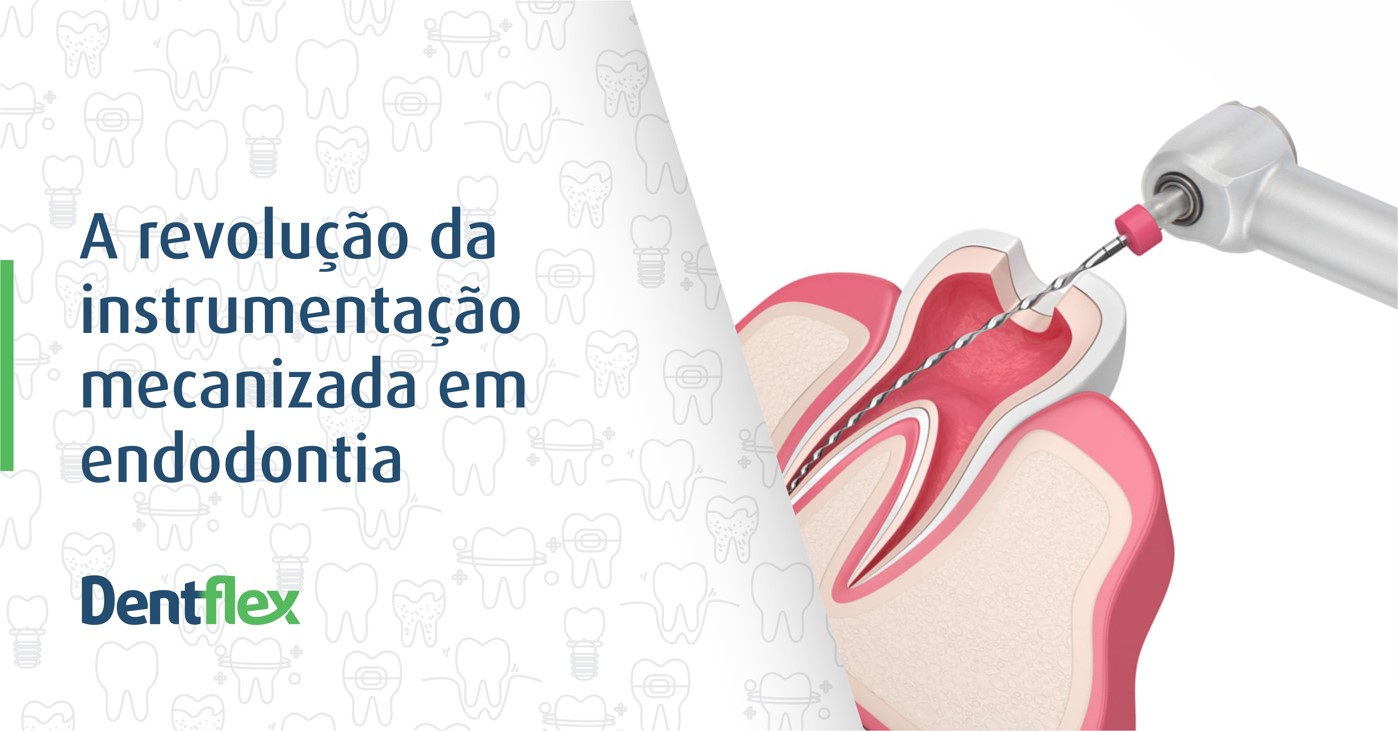The revolution of mechanized instrumentation in endodontics

Although the success of endodontic therapy depends on several factors, one of the most important steps in any treatment is the preparation or instrumentation of the root canals.
Throughout its history, Endodontics has been looking for a faster, more efficient and safer method for cleaning root canals.
The techniques used to instrument the root canals have undergone many changes in recent decades. In the late 1980s, the NITI alloy, originated in the 1960s for naval use, was presented by Walia et al as an alternative for the use of stainless steel in the manufacture of endodontic files. The introduction of instruments manufactured with nickel-titanium alloys, especially those used with the aid of rotating techniques, has greatly facilitated the procedures for cleaning the channels. We can say that the introduction of these instruments has revolutionized Endodontics.
In the literature, we can observe several studies proving the efficiency of NiTi rotary instruments in obtaining the taper of the preparation, less canal transport, less wear and tear of dental structure and greater speed, when compared to manual instrumentation.
At the present time, several types of rotary files are available on the market, each with its specific design characteristics, taper, tip, cutting surface, leaving the endodontist with a wide choice of use. These instruments work inside the channel, in clockwise rotating mechanical movements, employing electric motors with torque control at constant speed. The development of rotary preparation with nickel-titanium instruments brought professionals the possibility to solve many instrumentation problems.
In 2008, Yared introduced the reciprocating movement, presenting a new perspective in relation to the nickel-titanium files, reducing the stress of the file by the movement action of cutting in the counterclockwise direction and release of the instrument in the clockwise direction.
The reciprocating movement has as main objective to decrease the risk of fracture caused by the torsional stress of the instrument. Recently, WaveOne (Dentsply Maillefer, Switzerland) and Reciproc (VDW, Munich, Germany) files have been created specifically for use in reciprocating movement, being manufactured in a special NITI alloy containing the M-Wire in its chemical composition. , developed through an innovative heat treatment process, which allows instrumentation of the root canal with a single file. This M-Wire alloy has the benefit of increasing file flexibility and resistance to cyclic fatigue caused by file tension and compression forces.
Reciprocating systems are, in a way, non-continuous rotating systems and are not oscillatory. The fact of having an alternating continuous rotating action, significantly reduces the fatigue of the instrument, making it quite safe.
The design of the cutting blades of the reciprocating files is designed to the left, not being indicated to be used in the option of rotational movements. The cutting blades have a greater angle of rotation (counterclockwise), which determines the advance of the instrument into the channel and dentin cutting performance, while the smaller angle (clockwise) cuts in the opposite direction to the Larger angle, allowing the file to travel safely inside the channel, reducing the screwing effect and reducing the file's fracture.
It is important to remember that the great disadvantage of systems that use few files is that these instruments are “practically” disposable, because due to the concentrated effort, the fatigue is very great. Thus, when compared to rotary systems, these systems can have a slightly higher cost. However, what we can notice is that simplicity and speed of preparation are very attractive factors for endodontists.
Source: Local Odonto. Available at: https://localodonto.com.br/a-revolucao-da-instrumentacao-mecanizada/endodontia. Access on: 02/04/2021.
